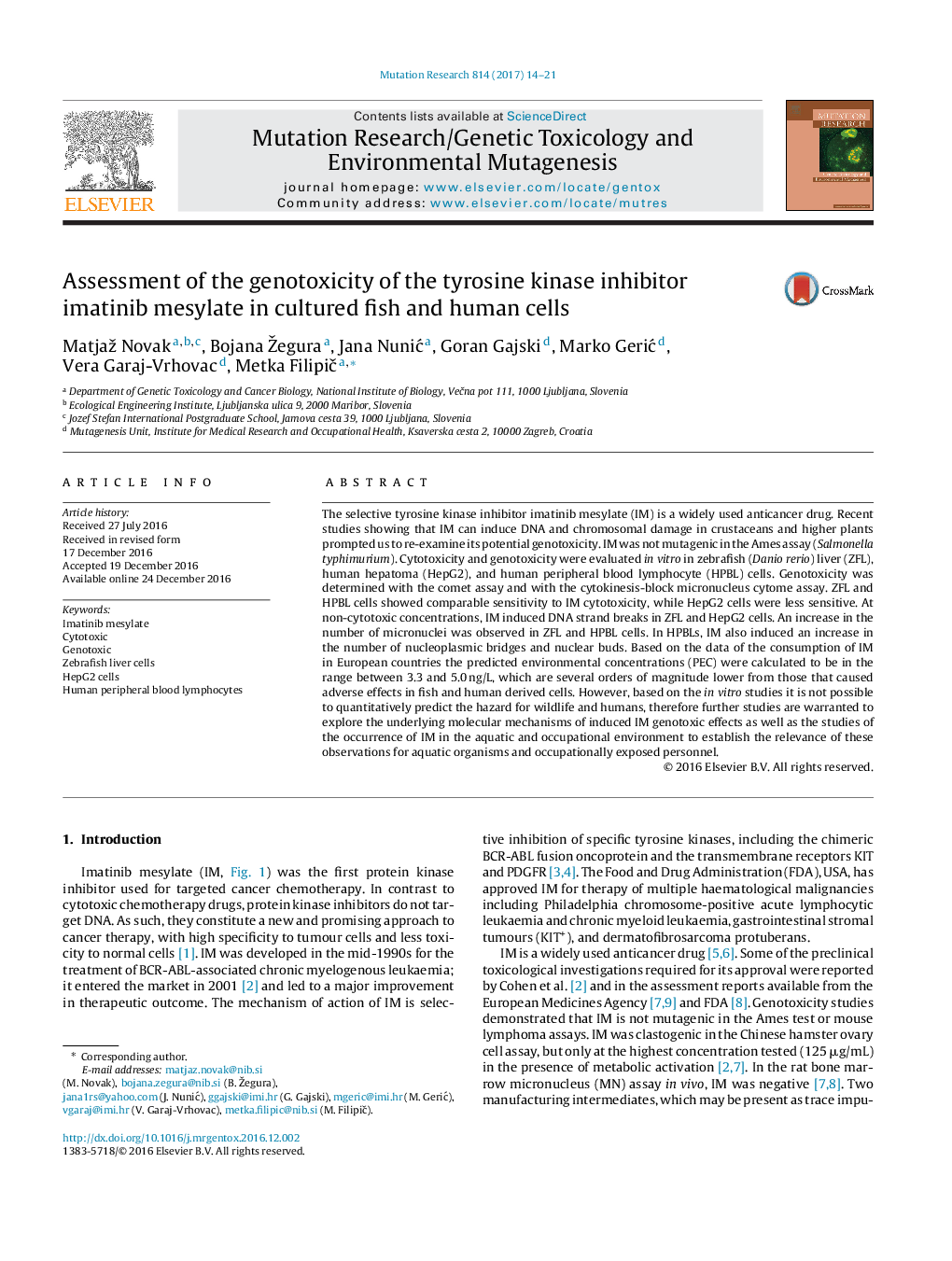| کد مقاله | کد نشریه | سال انتشار | مقاله انگلیسی | نسخه تمام متن |
|---|---|---|---|---|
| 5528743 | 1548556 | 2017 | 8 صفحه PDF | دانلود رایگان |
- Imatinib mesylate was developed for targeted cancer chemotherapy.
- At present it is one of the most wildly used anticancer drugs in developed countries.
- It is not mutagenic in bacterial reverse mutation assays (Ames test).
- In vitro it induces DNA damage and micronuclei in human and fish derived non-target cells.
- Genotoxic effects occur at concentrations higher than PEC values.
The selective tyrosine kinase inhibitor imatinib mesylate (IM) is a widely used anticancer drug. Recent studies showing that IM can induce DNA and chromosomal damage in crustaceans and higher plants prompted us to re-examine its potential genotoxicity. IM was not mutagenic in the Ames assay (Salmonella typhimurium). Cytotoxicity and genotoxicity were evaluated in vitro in zebrafish (Danio rerio) liver (ZFL), human hepatoma (HepG2), and human peripheral blood lymphocyte (HPBL) cells. Genotoxicity was determined with the comet assay and with the cytokinesis-block micronucleus cytome assay. ZFL and HPBL cells showed comparable sensitivity to IM cytotoxicity, while HepG2 cells were less sensitive. At non-cytotoxic concentrations, IM induced DNA strand breaks in ZFL and HepG2 cells. An increase in the number of micronuclei was observed in ZFL and HPBL cells. In HPBLs, IM also induced an increase in the number of nucleoplasmic bridges and nuclear buds. Based on the data of the consumption of IM in European countries the predicted environmental concentrations (PEC) were calculated to be in the range between 3.3 and 5.0Â ng/L, which are several orders of magnitude lower from those that caused adverse effects in fish and human derived cells. However, based on the in vitro studies it is not possible to quantitatively predict the hazard for wildlife and humans, therefore further studies are warranted to explore the underlying molecular mechanisms of induced IM genotoxic effects as well as the studies of the occurrence of IM in the aquatic and occupational environment to establish the relevance of these observations for aquatic organisms and occupationally exposed personnel.
142
Journal: Mutation Research/Genetic Toxicology and Environmental Mutagenesis - Volume 814, February 2017, Pages 14-21
